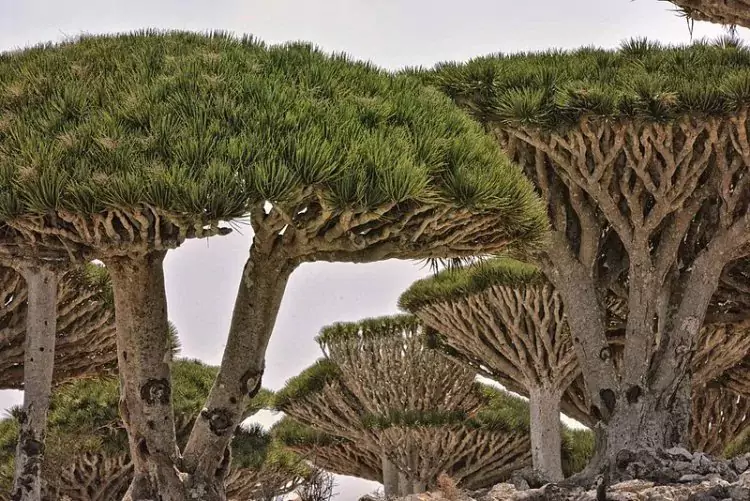The Fact of The Dragon Blood Tree, Why It is Called Dragon Blood
The Dragon's Blood Tree is a unique flora in the Socotra archipelago, Yemen. It's named dragon's blood because this tree emits red resin.

The type of flora Dragon Blood Tree or Dragon Blood Tree is one of the unique flora on Socotra Island. Quoting from the Economic Times page, this flora is a miracle cure for all diseases. This tree is called Dracaena cinnabari and is known as Suji Socotra and Dragon Blood Tree.
The Dragon's Blood Tree is a unique flora native to the Socotra archipelago, part of the city of Yemen. Its name comes from the red resin from the bark after it is cut. The tree is evergreen and can live up to 650 years, with a height between 33 and 39 feet.

Dragon Blood Tree Image | commons.wikimedia.org
Dragon Blood Tree is a succulent tree that is very hardy and not easy to dry. The Dragon Blood Tree can survive in warm temperatures and sub-tropical conditions. The tree has a unique physical appearance and is solid, almost like a good umbrella.
The first description of the Dragon's Blood Tree was made during a survey on Socotra Island led by Lieutenant Wellsted of the East India Company in 1835.
Many myths are spread around this rare tree. However, at that time, the locals had tried to use the red resin from the tree as a medicine for various ailments, including to cure fever, boils, and magic. It's even used as a varnish for violin instruments, too, you know!
In American Hoodoo, African-American sorcery, and New Orleans voodoo, the Dragon's Blood Tree is used in mojo as incense to clear space of negative entities or influences. It is also added to red ink to make "Dragon Blood Ink," used to write seals and magic amulets.
Due to the local belief that it is dragon blood, the Dragon Blood Tree is also used in magic and alchemical rituals which are believed to increase the potency of spells for protection, love, exorcism, and sexuality.
The Dragon Blood Tree's leaves shed once every three or four years before finally growing back together.
Few know that the Blood Suji (Dragon Blood Tree) can bear fruit. The fruit shape of this Dragon Blood Tree is in the form of a berry with small flesh.
Newly grown fruit skin colour will be greenish and black before turning orange when the fruit is ripe.
However, at this time, the habitat of this dragon blood tree has disappeared by as much as 45%(2018). Therefore various efforts are continuously being made to preserve the dragon blood tree. However, so far, it has not been enough to change the vulnerability status of the dragon blood tree.
Are you interested in this article? Discuss together in the comments column that has been provided. Come on! Share the link to this article, too, so it's not just you who knows. Greetings from Mina!
Image source: Dracaena cinnabari Image | commons.wikimedia.org

 Minanonymous
Minanonymous